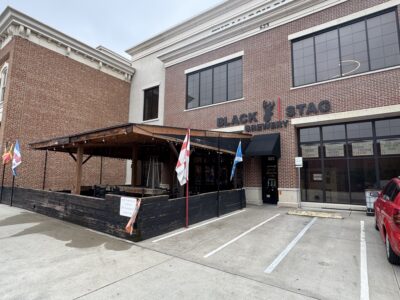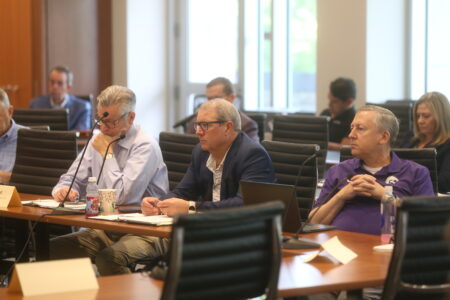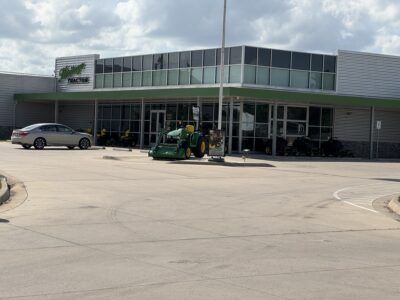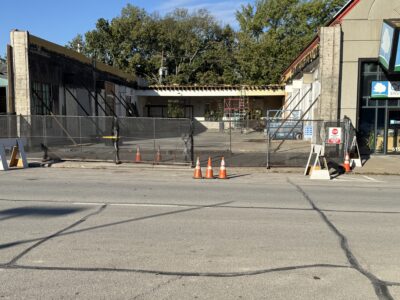
Lawrence retail sales fall for the month, but city is still outpacing most other retail markets in the state

photo by: Adobe Stock
A sales receipt is shown in this file photo.
Whether it was an impact from tariffs or a tournament, retail sales in Lawrence took a tumble in March, according to the latest report from the state.
The state’s April sales tax report — which primarily measures sales that occurred in March — shows taxable sales in Lawrence dropped by 5.5% compared to the same period a year ago. That was a much greater decline than the state as a whole experienced, with the statewide average checking in with a 1.4% drop.
Why retail sales were dropping around the state, and particularly in Lawrence, isn’t clear from the report. March was a period when tariffs were just beginning to be announced, and were receiving major national media attention. However, it seems unlikely that tariffs were a contributing factor to any March decline. Many of the largest tariffs got delayed, and there were more anecdotes of people doing last-minute buying before tariffs hit certain products, rather than cutting back spending.
As for the tournament factor, I’m talking about the NCAA men’s basketball tournament. You might have noticed that while you were loading your nacho platter into the wheelbarrow to transport to your Lazy Boy, the Jayhawks exited the tournament. KU’s first round loss in the tournament certainly did not help March sales in Lawrence bars, restaurants and snack food aisles. However, it is far from clear how much of an impact that had on Lawrence’s drop in retail sales.
Whatever the case, Lawrence is in a better position than some of the other large retail markets in the state. When you look at year-to-date numbers, Lawrence’s retail sales are up 4.2% compared to a year ago. That continues to be one of the largest increases in the state.
It is just not as large as it was. Last month when we reported on the numbers, Lawrence’s year-to-date growth was more than 7%. In other words, March’s downturn left a dent. Here’s a look at the year-to-date numbers for the major retail markets we track:
• Merriam: up 4.4%
• Lawrence: up 4.2%
• Manhattan: up 4.0%
• Sedgwick County: up 2.6%
• Topeka: up 2.1%
• Salina: up 1.6%
• Shawnee: down 0.1%
• Olathe: down 0.8%
• Kansas City: down 1.0%
• Lenexa: down 3.0%
• Statewide: up 2.9%
You’ll notice that 40% of the markets are now in negative territory for the year. Last month, only one of the 10 communities we track was in negative territory for the year. Whatever the reason, there was a widespread loss of momentum in March.
There are also other signs that momentum is not on Lawrence’s side currently. While Lawrence’s year-to-date numbers are still among the best in the state, that is due almost entirely to one good month. February sales tax collections — for reasons that aren’t clear — were up about 18%.
But Lawrence has now had two months in a row of not only declining retail sales, but sales that have declined at a rate faster than what is happening in most of the state’s other major retail market. In last month’s report, Lawrence had the largest one-month decline of the 10 major retail markets we track. In this month’s report, Lawrence ranked in the bottom half of the markets, with the third largest decline among the 10 cities. Here’s a look at those one month totals:
• Sedgwick County: up less than 0.1%
• Manhattan: down 2.2%
• Topeka: down 3.0%
• Salina: down 4.2%
• Lenexa: down 4.6%
• Shawnee: down 4.9%
• Kansas City: down 5.3%
• Lawrence: down 5.5%
• Olathe: down 5.7%
• Merriam: down 10.8%
• Statewide: down 1.4%
A quick note about Lawrence’s numbers for this month and going forward: I’m technically tracking the amount of taxable sales that occurred in Lawrence rather than the amount of sales tax collected. Usually, tracking either one would produce the same result in terms of a percentage increase or decline, but that’s not the case for the rest of the year.
Why? Because Lawrence’s sales tax rate increased on April 1. You can be forgiven if you didn’t notice. Voters in November approved an increase of 0.05 of a cent — a nickel for every $100 spent — to the city’s special tax for affordable housing programs.
That increase means Lawrence’s sales tax collections this year aren’t comparable to last year’s because the city should collect more in sales taxes even if retail spending goes down somewhat in the city. So, it is best to look at the total amount of taxable sales in the community to get a sense of whether the economy is slowing or growing. With some ciphering (my fingers and toes are going to be sore for the next year) I can calculate those totals with what is available in the state report.
The extra math is worth it, though, because sales tax totals are a major part of the city’s budget. Sales taxes are the largest single revenue source for general city operations. When sales taxes slow, pressure for a property tax increase normally follows.
Thus far, Lawrence’s sales tax totals are on the edge of being problematic. Lawrence likely will need sales tax collections to grow — not counting the growth from the higher tax rate — by about 5% in order to meet its current year budget. At 4.2%, it is within striking distance, but moving in the wrong direction.







